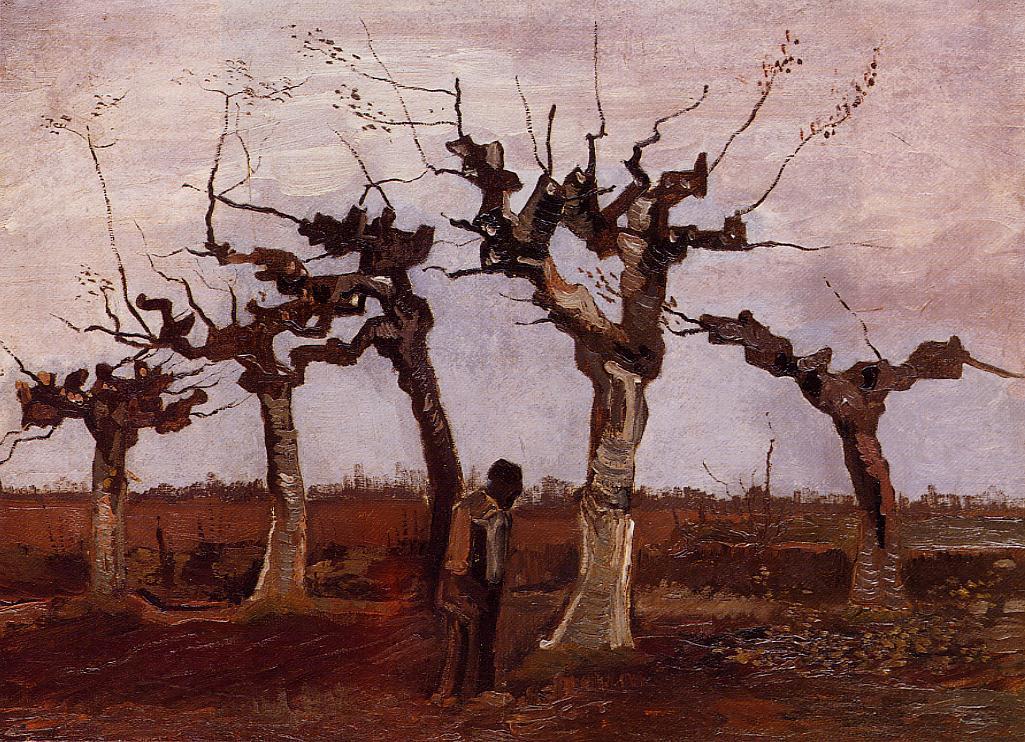Pollard Willows – Thomas Hardy’s ‘Tess of the D’Urbervilles’ (1891)
At last she got away, and did not stop in her retreat till she was in the thicket of pollard willows at the lower side of the barton, where she could be quite unseen. Here Tess flung herself down upon the rustling undergrowth of spear-grass, as upon a bed, and remained crouching in palpitating misery broken by momentary shoots of joy […]
At half-past six the sun settled down upon the levels with the aspect of a great forge in the heavens; and presently a monstrous pumpkin-like moon arose on the other hand. The pollard willows, tortured out of their natural shape by incessant choppings, became spiny-haired monsters as they stood up against it.
In his Tess of the D’Urbervilles (1891), Thomas Hardy challenges the sexual morals of Victorian society. The eponymous Tess, rendered a ‘maiden no more’ after she is subjected to the wicked overtures of the novel’s villain, Alec D’Urberville, is thrust into a dilemma when her beloved, Angel Clare, later proposes to her. In this excerpt, she can be seen agonising over whether she can possibly accept his hand in marriage without revealing her ‘fallen’ condition to him. The above image is an illustration that appeared in the original serialised run of the novel in The Graphic in 1891. Subtitled ‘Tess flung herself down upon the undergrowth’, it corresponds exactly to this excerpt.

Pollarding is a pruning technique which involves removing the upper branches of trees at regular intervals. Doing this promotes new growth which can be harvested to create a steady supply of wood. It lengthens the lives of trees by arresting them at a partially juvenile state. See, to the left, Vincent Van Gogh’s oil painting Landscape with Pollard Willows (1884) to get some idea of how Hardy’s willows might look like ‘spine haired-monsters’ to Tess.